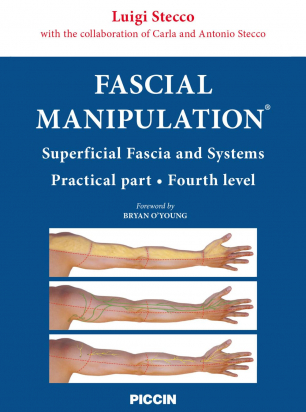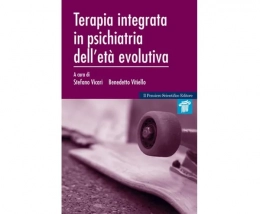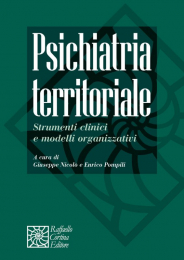Non ci sono recensioni
I have always been interested in the human fascia, and it is my greatest pleasure to have met and worked with Antonio Stecco, the son of Luigi Stecco, considered one of the pioneers in the field. I am honored to be invited to write the foreword for Fascial Manipulation Practical Part Level IV: Superficial Fascia and Systems, edited by Piccin Nuova Libraria.
As the former president of the American Academy of Thermology, I look forward to the insights that this new book will bring regarding vascularization of the superficial fascia, the vital shunts between arterial and venous systems, and the differentiation among body regions. This data will assist in explaining many of the patterns from thermographic studies.
It is now evident that the upper back and neck have a superficial fascia with a high concentration of vessels that enhance thermographic signals. The new information from Steccos’ books, and in particular this book, will further enlighten the reader on the critical role of the superficial fascia not only in thermoregulation and vascularization of the skin but also in relation to the lymphatic system and fat lobules.
The book presents an innovative way to treat lymphedema with clear rationale and guidelines to assess and restore lymphatic flow. An increase in superficial fascia stiffness could collapse the lymphatic vessels and the inflow and outflow of the lymph nodes. It is also interesting to consider the correlation between the immune and lymphatic systems and how they influence one another—requiring simultaneous assessment and treatment. The author emphasizes that this book seeks to help practitioners treat patients and guide them during the assessment process to better define treatment strategies for faster and long-lasting results.
The book combines all the information of levels I, II, and III for a more systemic approach to dysfunctions that require a full vision of the human body. I believe that this should be the goal of all healthcare practitioners working in rehabilitation. Too often, I have seen a localized approach that could not give the results expected. This global approach was also used in Luigi Stecco’s Acupuncture: Western Medicine and Fascial Manipulation. He provides an essential overview of the relationship between cultures and reinforces a holistic, developmental approach to the body. My acupuncture experience allows me to understand better what Luigi means when he writes that fascia is “the connective tissue that connects Eastern and Western medicine.” With Level IV, Practical Part: Fascial Manipulation, we can discuss how the internal systems (immune, thermoregulation, and metabolic) directly connect with the external systems (lymphatic, cutaneous, and adipocytes).
This work presents a brilliant clarification of the autonomic nerve system, underlying how the paravertebral ganglia, the ‘primitive ganglia,’ organize efferent and afferent neurons from the superficial fascia. In contrast, the prevertebral ganglia are like a ‘second brain’ that organizes these neurons from the hypothalamus to the organs. The para- and pre-vertebral ganglia interact to allow the body to self-regulate in relation to environmental changes.
It is fascinating how difficult pathologies, such as complex regional pain syndromes, can be easily understood and treated. A peripheral nerve is 80% autonomic fibers. Most of these fibers reach the superficial fascia and the skin to regulate and carry information. An increase in the stiffness of either the superficial or deep fascia can generate multiple nerve entrapments.
I invite all clinicians to read this book in order to learn how to diagnose and appreciate the fascia.
Bryan O’Young, MD
Professor and Vice-Chair of Education
Lewis Katz School of Medicine,
Chief of Outpatient PM&R Services
Temple University Health System,
Clinical Professor, NYU School of Medicine
Rusk Rehab at NYU Langone Medical Center
Adjunct Clinical Professor,
Weill Cornell Medical College
Chief Editor, PM&R Secrets, 4th Edition
Contents
Abbreviations .................................................... ix
New terminology ............................................... x
F®ÙÝã ÖÙã
AÄãÊÃù Ä Ö«ùݮʽʦù Ê¥ ã« ÝùÝãÃÝ ... 1
Chapter 1
External and internal systems ......................... 3
Anatomy of the external systems and superficial
fascia ......................................................................... 4
Physiology of the external systems and
paravertebral ganglia ............................................. 13
Anatomy of the internal systems and
autonomic nerves .............................................. 20
Physiology of the internal systems and
prevertebral ganglia ............................................... 22
Grids for the external and internal systems ...... 30
Chapter 2
Adipose and metabolic systems ..................... 37
Anatomy and physiology of the adipose
system....................................................................... 38
Anatomy and physiology of the metabolic
system....................................................................... 47
Chapter 3
Lymphatic and immune systems .................... 55
Anatomy and physiology of the lymphatic
system....................................................................... 56
Anatomy and physiology of the immune
system....................................................................... 65
Chapter 4
Cutaneous and thermoregulatory systems . 73
Anatomy and physiology of the cutaneous
system....................................................................... 74
Anatomy and physiology of the thermoregulatory
system....................................................................... 83
Chapter 5
Psychogenic and central nervous systems .. 91
Anatomy and physiology of the psychogenic
system....................................................................... 92
Somatotypes and different treatments.............. 99
Anatomy and physiology of the central
nervous system .................................................. 100
Muscle spindles and centres of coordination ... 102
Golgi tendon organs and centres of fusion ....... 110
SÊÄ ÖÙã
TÙãÃÄã Ê¥ ã« ÝùÝãÃÝ ................................ 119
Chapter 6
Treatment of the adipose-metabolic
system ..................................................................... 121
Treatment of the adipose system ..................... 122
Adipotomeres in the head (caput) and neck
(collum) .............................................................. 124
Adipotomeres in the trunk ................................ 132
Adipotomeres in the upper limb ....................... 140
Adipotomeres in the lower limb ....................... 148
Treatment of the metabolic system.................. 156
Chapter 7
Treatment of the lymphatic-immune
system ..................................................................... 163
Treatment of the lymphatic system .................. 164
Lymphatomeres in the head and neck.............. 166
Lymphatomeres in the trunk ............................. 174
Lymphatomeres in the upper limb.................... 178
Lymphatomeres in the lower limb .................... 186
Treatment of the immune system .................... 194
Capitolo 8
Treatment of the cutaneous-thermoregulatory
system ..................................................................... 201
Treatment of the cutaneous system ................. 202
Dermatomeres in the head and neck ............... 204
Dermatomeres in the trunk............................... 212
xi
xii
Dermatomeres in the upper limb ..................... 220
Dermatomeres in the lower limb ...................... 228
Treatment of the thermoregulatory system ..... 236
Chapter 9
Treatment of the psychogenic and central
nervous systems................................................... 243
Treatment of the psychogenic system .............. 244
Superficial fascia and dysfunctions of the
external systems ................................................ 246
Muscular fascia and locomotor apparatus
pain .................................................................... 248
Internal fascia and dysfunctions of the
apparatus-fascial sequences ............................. 250
Meningeal fascia and mental elaborations ....... 252
Treatment of the central nervous system ........ 256
Fascial neurorehabilitation ................................ 258
Rehabilitation of the trunk ................................ 263
Rehabilitation of the upper limb ....................... 270
Rehabilitation of the lower limb........................ 277
Rehabilitation of chronic outcomes .................. 284
Conclusion ............................................................... 293
References ............................................................... 295




